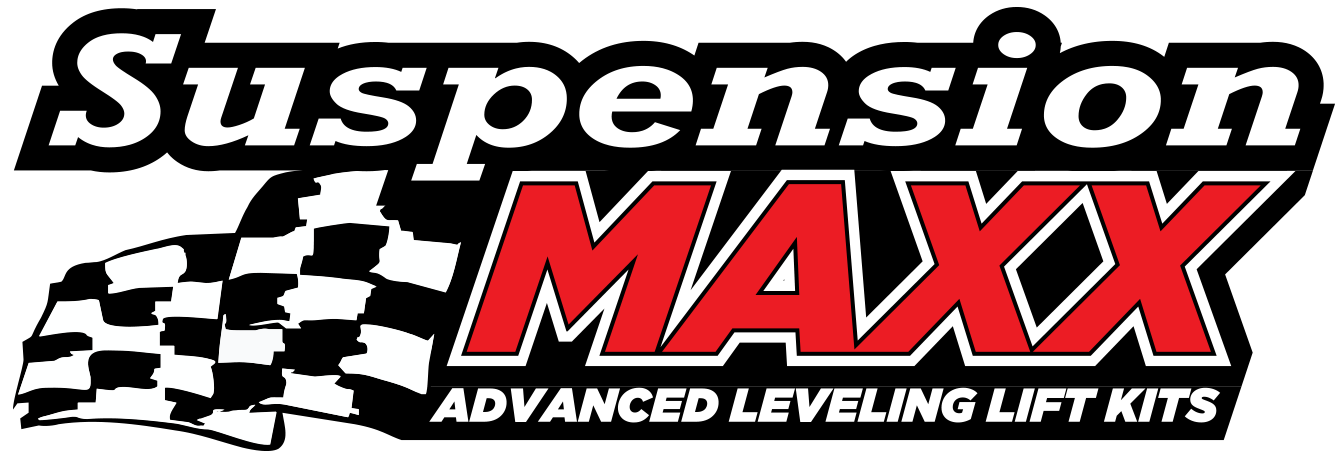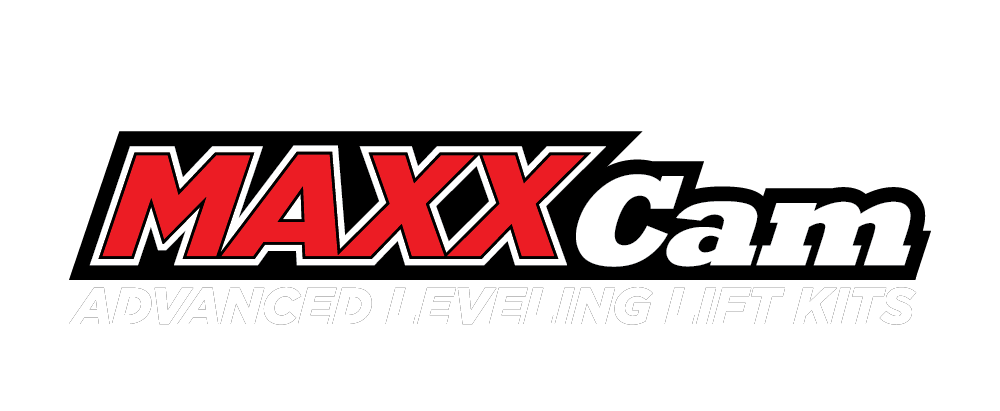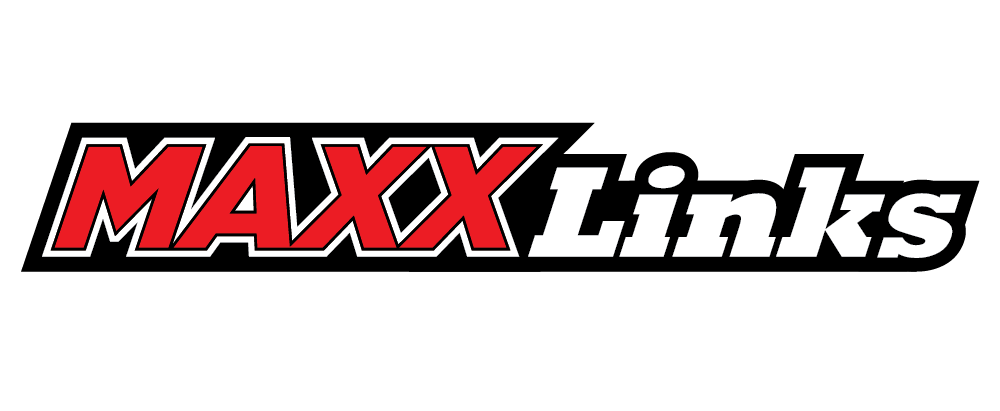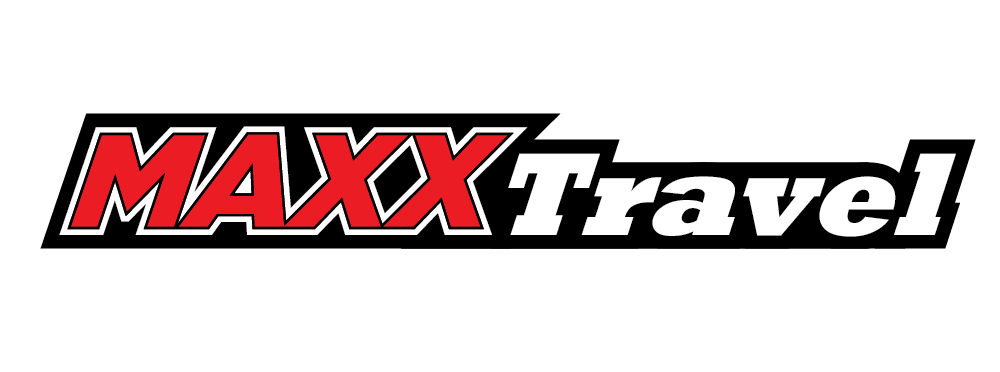Frequently Asked Questions
Leveling Kits FAQ
When GM designs your truck they pick a wheel that works well and keeps the vehicle load centered underneath the brakes, wheel bearings, and ball joints, making for the best combination of tire clearance and proper handling characteristics. A perfect aftermarket wheel for a leveled Chevy 2500HD will keep the majority of the tire underneath the centerline of the wheel, which would be a positive offset wheel. Factory wheels are usually higher positive offsets, for example, an 8” wheel with a +44 offset. Most aftermarket wheels will start at 9” in width. So you already 1” wider wheel than stock not to mention the change in offset. Now let’s discuss wheel offset. Offset is another term for wheel backspacing. Backspacing is measured in inches from the hub flange on the wheel to the bead, or lip of the wheel. Offset is a metric measurement in Millimeters from the centerline of the wheel. Using an offset chart, you can compare backspacing to offset and quickly see the difference from stock to aftermarket wheels. On the backspacing chart, you match up the stock wheel width of 8” and the offset of +44 a backspacing of 6.25”. The new wheel that you have fallen in love with is offered in both 9” and 10” widths and several offsets. Which should you choose?
Using an extremely wide wheel with a negative offset can change the handling and driving characteristics of your truck. Moreover, using a wheel with a Negative offset adds more stress to the wheel bearings, ball joints, and outer tie rods, all due to the vehicle weight being moved out from underneath the suspension. We always suggest a 9” wheel for best fitment. If you are in favor of having the tire outside the fender, a Zero offset 9” wheel is the right choice. For a flush look, the tire is even with the fender a +19 offset and 9” wheel is needed. 10” wide wheels can be used but will require smaller tires than the max tire size. Most times, using a 10” or 12” wheel may require trimming and modifications to operate with no rubbing.
|
Stock 8” wheel |
9” wheel |
9” wheel |
10” wheel |
12”wheel |
|
+44 offset |
+19 offset |
+0 offset |
-18 offset |
-44 offset |
|
6.25” backspacing |
5.75” backspacing |
5.25”backspacing |
4.75” backspacing |
4.75” backspacing |
|
1.75” past hub flange |
3.25” past hub flange |
3.75” past hub flange |
5.25” past hub flange |
7.25” past hub flange |
The best way to know which size leveling kit you need is to measure the ride height. Measure the ground to the fender opening on both front and rear fender wells. Subtract the difference, and that is the amount of lift needed to level your truck. This difference between the front and rear ride height is also known as the rake.
Yes, a wheel alignment is required anytime you service or modify your suspension. A proper wheel alignment will bring your vehicle back to factory specifications. If you do not perform a wheel alignment, expect uneven tire wear to occur.
We work very hard to provide the highest quality leveling kits available, and we include all the necessary hardware to level your truck or SUV properly. Our kits can consist of shock extensions, bump stops, magnetic ride sensor brackets, differential lowering spacers, and even upper control arms. We routinely install our kits at our Head Quarters and provide full-color instructions to help you install the same way we do. With that being said, we do our homework, so your truck will ride, drive, and handle like the factory intended it.
SuspensionMAXX stands behind its Leveling kits with a limited structural warranty, covering defects in material and workmanship. This warranty does not cover normal wear and tear or any other loss, liability or damage resulting from improper installation, disassembly handling or use of the product. Manufacturer shall not be liable for any incidental, consequential, or other damages resulting from the disassembly, installation, or use this product. The loss of use of the product, loss of time, inconvenience, and consequential damages are not covered. The consumer is responsible for all labor charges, removal, and reinstallation of the product.
Torsion bar suspension systems have a factory adjustment bolt that is designed to level any variations in ride height from left to right. It is not intended to give inches of lift by cranking up your torsion bars. The torsion bar adjustment bolt is designed to take up any sag or differences in ride height. Let’s say for instance you decide to crank your bars to level your truck and clear larger tires. Your tires may clear at first, but after your truck is driven for a short time, your tires then begin to rub. However, your bolts are turned up all the way, with no more adjustment left. Using a SuspensionMAXX leveling kit is the right way to level your truck and still allow for continued torsion bar adjustment in the future. Not to mention the MAXX cam system is adjustable and is designed to work on 100% of trucks on the road. With the patented Maxx cam leveling kit system you can put the precise amount of adjustment on your torsion bars.
Torsion bars are manufactured and heat treated to handle the weight of your truck. However, many times, one torsion bar may have a higher load than the other. This is common, and there is no need to worry. Some customers have insisted on replacing their original torsion bars for factory new replacements. Even if your torsion bars have become sagged to an extreme amount, we have had great success using our MAXX Cam leveling kit to re-adjust your front ride height to your desired stance. I commonly compare this to adjusting your garage door. After years of use, your garage door spring may settle and need an additional adjustment to make opening the door easier. The Maxx Cam system functions much in the same way, bringing back the lost suspension ride height.
Control Arms FAQ
Your factory length shocks can be reused with our stage 1 kit. The Bilsteins 5100 front shocks 24-253161 are a stock length and require a shock extension that is included with our kit. Bilstein does not offer a 2-3" longer shocks, so you must use the supplied shock extensions.
The FOX 2.0 part number 980-24-189 is an extended length and is designed to be used on 2-3" leveling kits. Another difference between the Bilstein and Fox is the manufacturer limited warranty. The Bilstein 5100 shocks are covered by Bilstein's limited lifetime warranty. The Fox has a 1-year limited warranty and can be rebuilt/serviced with new seals and oil.
The secondary Diff drop is optional and you can install our kit without it if you do not feel comfortable doing the modification. This is an additional diff spacer to lower the differential housing inside the cross-member. Giving you the maximum amount of diff drop for the best possible CV axle angle.
The factory Control Arms, with flat, single plane has several limitations. The factory geometry limits downward suspension travel at close to 2.5” of lift from stock. This is done to protect the shock absorbers and drive axles. Using our Stage 1 or stage 2 kit, we have already addressed these issues with extended the shock absorbers and lowering the front differential. The new MAXX travel A-arm is designed to have additional travel at your new lifted ride height. Working great for 2- 3” of lift over stock. With improved ball joint angle from the arced geometry, you will get thousands of miles of ball joint life from the addition of the MAXX travel upper control arms that we include in our stage 1 & 2 kits.
So many factors play a key role in choosing the right size tire. It really boils down to choosing the right wheel. If you choose the wrong wheel specs you will find very few tires may work with that combination. Stock wheels are normally 8" wide with a high positive +44 offset. If you are going to an aftermarket wheel we recommend a 9" wide wheel for the best fit and clearances with a positive +18 offset. With this combo or the factory wheel, you can clear up to a 35" x11.50" tire. Some customers have also had success with the 35" x 12.50" tire but I prefer the 11.50 option. Listed below are some great sizes.
295/65/20 = 35.1" X 11.6"
275/65/20= 34.1" X 10.8"
295/70/18=34.3" X 11.6
285/75/18= 34.8"X 11.2"
If you do choose to use a 10" or 12" wide wheel with Negative offset in combination with our stage 1 or 2 kits we strongly suggest you stick to a 33" diameter tire.
As far as labor to install this kit. 3.0 -5.0 hours for installation + alignment.
Our kits are 100% made in the USA and offer the highest quality components and craftsmanship. Each tubular A-arm is formed from 3/16" wall x 1-3/4" DOM tubing and tig welded for strength and durability. We use 3/4 ton Moog factory press in ball joints that are designed to clear the factory wheels with up to a 35" tire. We build our parts to the highest standard not down to a price. Yes, there are cheaper kits out there, but I am a firm believer in you get what you pay for and nothing is free.
Block and U-bolt Kits FAQ
No, this is not necessary on blocks less than 3” in height. No change in pinion angle is required for 1-2.5” of lift.
Suspension MAXX block and U-bolt kits use high-quality blocks from SOLID STEEL, unlike the cheaply made hollow cast import lift blocks. Each of our blocks is precision cut and CNC machined. We also use All- American made steel U-bolts, Tall Nuts, and Heavy Duty washers.
Factory shocks have 8-12” of shock travel and can work well with 1” and 1.5” of lift on most trucks. 2” of lift is the maximum height of lift we recommend; it depends on the application as some vehicles like F150 trucks have extremely long shocks from the factory. Shock extensions or longer shocks will be needed for sharp drop-offs, like speed bumps, for example.
Shock Absorbers FAQ
Bilstein & Fox offer excellent Monotube shock absorbers. Here are a few differences. It really is a matter of personal preference.
• Bilstein offers a limited lifetime warranty; FOX provides a 1-year limited warranty, butFOX shocks are serviceable. Meaning they can be rebuilt with new seals, fresh oil and nitrogen gas charge.
• If you are looking for a shock for 2011-2019 GM HD trucks, Fox is available in extended length versions for 2-3” of lift. The Bilstein 5100 is only available in stock length and will require shock extensions.
Steering Stabilizers FAQ
We have tested the Bilstein 5100 steering dampener on our 2016 Chevy 2500HD. After testing, we discovered that using a single steering stabilizer with a nitrogen gas charge will create a condition where the vehicle will continually pull to the right side. Using a nitrogen charged stabilizer will require a minimum of 2 units to resist the gas charge of the other equally. That is why we only currently offer the Rancho non-gas charged steering stabilizer. The 5100 will function adequately, but you can expect that the truck will always drift to the right. What about FOX? FOX does not currently offer a stabilizer for this application.
No, you do not have to unload your torsion bar to install the Suspension MAXX steering stabilizer bracket. Our design is patent pending, with a keyed retainer around the lower control arm bolt. Loosen the nut and carefully back out the lower control arm bolt, just enough to slide the bracket into place. Then insert the key into the slotted bracket. This unique design allows for easy installation without needing a torsion bar unloading tool. See our installation video: https://youtu.be/BORozCm6ppE
Sway Bar Links FAQ
Measure the sway bar end link from the center line of the lower mounting point to the centerline of the upper mounting point. Our links are built to the specific center to center measurements.
First select the link style you need based on your year make and model. Then add the desired measurement to the end of the part number. For example, if you need an 8-1/2 “ sway bar end link for your 2006 Dodge Ram 2500. The link style would be SMX-1226. The 8.5” version would be SMX-122685 or for an 8” version SMX-122680. We can build you a sway bar link for your RAM up to 12” Center to Center! Depending on your model Please verify the style of end link you need for your truck. Dodge has changed the sway bar links in some cases every two years and we have done our best to narrow the sway bar links down to the exact year make and model.
Lift kits often come with screw on extensions for your sway bar links or they use a drop bracket for the frame that allows you to keep the OE sway bar links. Most drop brackets are 2.0 -2.5” and also move the sway bar forward for additional clearance to the coil spring.
We experienced and had customers try the Adjustable Heim joint style end links and at first they are great. As the Heim joints wear over time they end up loose and noisy. No longer capable of keeping the sway bar firmly mounted to the axle.
Your sway bar should be on a neutral angle, parallel with the frame.
You can hire a professional installer to help you.
